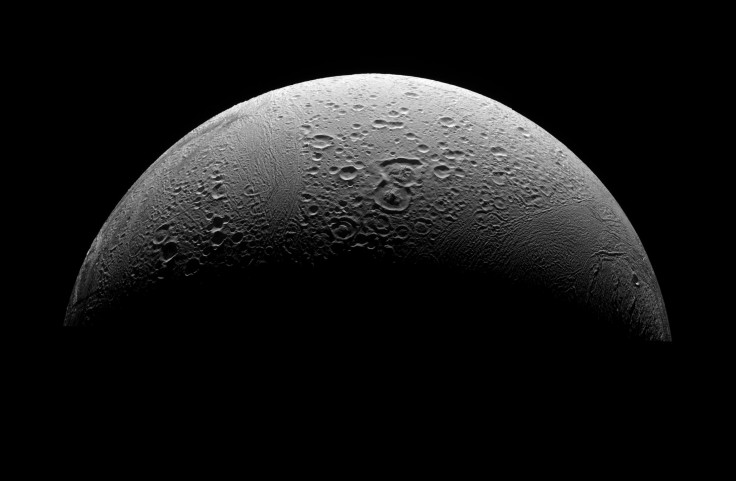Enceladus, Saturn’s Icy Moon, Is Hiding An Ocean Inside But, Does It Host Microbial Life?

Astronomers have used NASA’s Cassini spacecraft and Deep Space Network, a web of communications systems spread around the world, to discover strong evidence of a large underground ocean of liquid water on Enceladus, one of Saturn's seven moons, making the satellite a top bet for a potential home to extraterrestrial life.
The study’s results, published in the journal Science on Friday, are the most significant findings about Enceladus’ interior after researchers proposed the existence of water on the moon in 2005, when Cassini discovered water vapor and ice spewing from vents near the moon's south pole.
“Material from Enceladus’ south polar jets contains salty water and organic molecules, the basic chemical ingredients for life,” Linda Spilker, Cassini's project scientist at NASA's Jet Propulsion Laboratory, or JPL in Pasadena, Calif., said in a statement. “Their discovery expanded our view of the ‘habitable zone’ within our solar system and in planetary systems of other stars.”
The researchers measured the variations in Enceladus’ gravity field and found evidence of a large, possibly regional, ocean about six miles deep, beneath an ice shell about 19 miles to 25 miles thick. The latest findings support the notion that Enceladus, which is barely 300 miles in diameter, could be a place -- other than Earth -- in the solar system to host microbial life, according to researchers.
Cassini has flown near Enceladus 19 times, and during its three flybys between 2010 and 2012, the spacecraft collected precise measurements about its trajectory around the moon. When a spacecraft comes near a planetary body, such as Enceladus, its flight path gets altered by the sphere's gravitational pull, and variations in its gravity field, caused by mountains or differences in underground composition, can be detected through changes in the spacecraft's velocity.
By analyzing the flyby data and radio signals between Cassini and the Deep Space Network, the researchers found evidence of a zone inside the southern end of Enceladus with a higher density than other portions of the moon's interior.
“The Cassini gravity measurements show a negative gravity anomaly at the south pole that however is not as large as expected from the deep depression detected by the onboard camera,” Luciano Iess of Sapienza University in Rome and the study’s lead author, said in the statement.
“Hence the conclusion that there must be a denser material at depth that compensates the missing mass: very likely liquid water, which is seven percent denser than ice. The magnitude of the anomaly gave us the size of the water reservoir.”
© Copyright IBTimes 2024. All rights reserved.






















